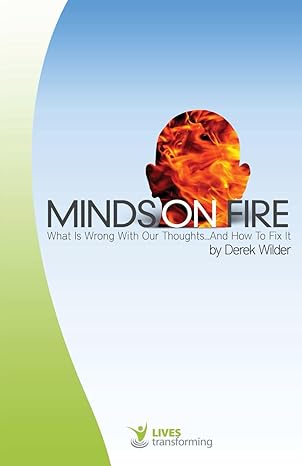Prophetic rhetoric utilizes the structure and form of language to effectively communicate a message, and the prophet Jeremiah represents one of the finest rhetoricians of all time. A key question for interpretation is how literary features inform understanding. Without understanding the relationships between the literary features and the message, the reader risks misinterpretation. Specifically, the literary features associated with Jeremiah 20:7-18 stress that a true prophet cannot forsake God’s sovereign call, and a faithful God will not forsake His chosen prophet. First, a brief contextual and structural prelude is followed by an analysis that identifies and explains key literary and rhetorical features central to theological messaging. Within each poetic segment, connections are then made between the literary features and the message to inform understanding. A final section assimilates the data from the poetic analyses and provides a comprehensive connection between the literary and rhetorical features and the overall theological message of the text.
Identification and Explanation of Key Literary and Rhetorical Features
A Prelude to a Lament
A nod to literary context alongside an overview of the literary structure of the passage provides a backdrop and framework for the text. After leaving Topheth, Jeremiah prophesied impending doom at the court of the temple (Jer 19:14-15). As a result, the priest Pashhur, a chief officer of the court, beat Jeremiah and placed him in the stocks (Jer 20:1-12). Upon release, Jeremiah lashed out at Pashhur and informed the priest he would die in exile (Jer 20:3-6). According to Robert Chisholm, the humiliation experienced by Jeremiah sets the stage for the following poem.[1]
The shift to poetry in verse 7 sets the upper limit of the passage, and verse 18 completes the poetic unit prior to the resumption of the narrative. More challenging is the partitioning of the poem itself. Jack Lundbom suggests that rhetorical analysis, rather than form criticism, appropriately divides the passage into three poems by recognizing the change of tone and keyword groupings that segregate verses 7-10, 11-13, and 14-18, respectively.[2] Furthermore, although not perfectly symmetrical, the entire passage appears to provide a chiastic structure. Lundbom explains that a chiasmus is an inverted literary pattern whereby the center often exists as a climax or turning point.[3]
The outermost segments communicate Jeremiah’s shame in verses 7 and 14-18 (A, A1), and then the poem moves inward to Jeremiah’s decisions regarding speaking to God in verses 9 and 13 (B, B1), which is followed by the topic of revenge and vengeance in verses 10 and 12 (C, C1). The climax of the chiasmus in verse 11 centers around the phrase, “Yahweh is with me” (D). As will be seen, the focal point of the chiastic structure informs the overall theological message of the passage, which is developed through the analysis of the three individual poems.
You Enticed Me: Jeremiah 20:7-10
The literary genre of the first poem is an individual lament. Gary Smith explains that a lament is a prophetic utterance of mourning during a period of crisis.[4] Although beyond the scope of strict literary and rhetorical analysis, the Hebrew lemma, פָּתָה, is significantly debated, but in agreement with Michael Brown, the basic meaning is “to entice.”[5] The immediate repetition of the lemma פָּתָה in verse 7 rhetorically emphasizes the idea that the prophet feels violated. According to scholarly consensus, the enticement recalls Jeremiah’s commissioning and God’s promise of deliverance in Jeremiah 1:4-8.[6] The repetition and intertextual reflection informs the theological message that God is in control. The prophet does not select his call, the call selects him under God’s sovereign rule. Jeremiah threatens no longer to speak the name of Yahweh, but through the use of simile, the prophet emphasizes that God’s words are like a burning fire within him (Jer 20:9). The combustive comparison is then enhanced through the use of paronomasia, which, according to Lundbom, is a play on words to gain attention.[7] The fire is locked (עָצַר) within Jeremiah’s bones (עֶ֫צֶם), thus, as Brown explains, even if Jeremiah shuts his mouth, the words will still burn inside his bones. [8] In other words, the prophet’s commission appears to be irresistible. Regardless, the ironic language in verse 10, where friends are enemies gossiping and plotting Jeremiah’s demise, exposes the prophet’s deep anguish and despair.
Yahweh is With Me: Jeremiah 20:11-13
The literary genre now shifts from a lament to a thanksgiving. Lundbom suggests that the poetic segment is a later addition.[9] However, discontinuity is not necessary. Daniel Estes observes that profound emotional shifts from pain to praise often occur within individual Lament Psalms.[10] Accordingly, it is not unreasonable to discover a similar phenomenon within the prophetic laments. Furthermore, literarily, Lundbom asserts that chapter 20 concludes the First Edition of the book of Jeremiah.[11] Thus, the proclamation that Yahweh is still “with me” (Jer 20:11) not only stands at the center of the chapter 20 chiasm mentioned above, but it also makes an inclusio with chapter 1. Lundbom explains that an inclusio is a repetition of a beginning at the end of a segment and often functions to provide closure or emphasis.[12] In the case of verse 11, Jeremiah proclaims that Yahweh is with him, will deliver him from the adversaries, which is reminiscent of Jeremiah 1:8 and 19 and provides both emphasis to the message of God’s faithfulness and an initial closure to the First Edition. Accordingly, the literary and rhetorical methodology informs the theological message that God is faithful to keep His promises. Within the immediate context, Brown notes that Jeremiah’s praise and thanksgiving need to be read not only in light of the rescue from Pashhur, but also with confidence in God’s faithfulness shared by the broader community in acts of communal praise (Jer 20:13).
Cursed Be the Day: Jeremiah 20:14-18
The third poem reverts back to a lament from Jeremiah. In agreement with Lundbom, the two curses on the man and day announced in verses 14-15 necessitate the following reconstructive addition to verse 17 to highlight its rhetorical force: “[Let that day be like ……..].”[13] The reconstruction provides a chiasm of day (14), man (15), man (16), and day (17), which emphasizes the two curses and the utter despair of the prophet.
Figurative language abounds in the final poem to accentuate the prophet’s misery. For example, simile is used to compare the cursed man who is like the cities, which, according to Lundbom, represents Sodom and Gomorrah with the use of metonymy.[14] Furthermore, hyperbole and metaphor is used when Jeremiah references an eternally pregnant mother whose womb is a grave to further emphasize Jeremiah’s misery. However, a rhetorical question provides the finale, “Why this: from the womb came I forth?” (Jer 20:18). It appears the poem concludes without an answer. However, Lundbom explains the divine answer emerges in the form of a final inclusio to the First Edition of the book. Jeremiah came forth from the womb because Yahweh knew and called the prophet before he was formed in the womb (Jer 1:5).[15] The theological message is reinforced by a chiasm of a call complaint in the first poem, praise for deliverance in the second poem, and a call complaint in the third poem, with deliverance standing at the center. In sum, God has been in control from even before the prophet’s conception. Again, the prophet does not select his call, but in God’s sovereignty, His creator selects him.
Connection Between Literary and Rhetorical Features and the Theological Message
Although numerous explanations regarding how the various literary and rhetorical features relate to the theological message of the text have been provided within the above analyses, the theological message of the entire passage, which pulls from all three individual poems, provides a final connection. Specifically, the original chiastic structure referred to in the prelude now takes on deep theological meaning and significance. The outermost segments convey the misery and despair of the prophet. However, the innermost segment provides the climactic center. Throughout all of Jeremiah’s pain, suffering, and misery, God is with Jeremiah. The theological message and significance are unmistakable: When called to preach to a faithless people, a prophet’s life is often intolerable, but a true prophet cannot forsake God’s sovereign call that burns in his bones, and a faithful God will not forsake His prophet who was known and commissioned before he was formed in the womb.
Conclusion
Without question, the masterful skills of the weeping prophet provide rhetorical and literary features that inform theological messaging. From the broad perspectives of genre analysis, chiasms, and inclusios, to the individual elements of repetition, metaphor, and paronomasia, each feature plays a role in communicating the significance of the prophet’s message. In the case of Jeremiah 20:7-18, the literary features inform a message that stress that a true prophet cannot forsake God’s sovereign call, and a faithful God will not forsake His chosen prophet. Although, at times, an individual’s call may seem intolerable, the promise that God will remain with His believers provides a message of hope during the crises of life.
___________________________
[1] Robert B. Chisolm, Handbook on the Prophets: Isaiah, Jeremiah, Lamentations, Ezekiel, Daniel, Minor Prophets (Grand Rapids: Baker Academic, 2009), 178–179.
[2] Lundbom, Jeremiah 1-20, 853.
[3] Jack R. Lundbom, The Hebrew Prophets: An Introduction, 1st ed. (Minneapolis: Fortress Press, 2010), 175.
[4] Gary V. Smith, Interpreting the Prophetic Books: An Exegetical Handbook (Grand Rapids: Kregel Academic, 2014), 194.
[5] Michael Brown, Jeremiah–Ezekiel, vol. 7 of The Expositor’s Bible Commentary, ed. Tremper Longman III and David E. Garland, rev. ed. (Grand Rapids: Zondervan, 2010), 286–288. According to Brown, the broad semantic range of פָּתָה includes the following possibilities: (1) to persuade, which is unlikely, (2) to seduce, which unnecessarily includes sexual overtones, and (3) to deceive, which is not convincing. However, in a sense, Jeremiah does appear to feel violated in some way by apparently not understanding the complete ramifications of his calling.
[6] Lundbom, Jeremiah 1-20, 855.
[7] Lundbom, The Hebrew Prophets, 197.
[8] Brown, Jeremiah–Ezekiel, 7:289.
[9] Jack R. Lundbom, Theology in Language, Rhetoric, and Beyond (Eugene: Wipf and Stock, 2014), 128.
[10] Daniel J. Estes, “The Transformation of Pain into Praise: In the Individual Lament Psalms,” in The Psalms: Language for All Seasons of the Soul, ed. Andrew J. Schmutzer and David M. Howard Jr (Chicago: Moody, 2013), 151–153.
[11] Lundbom, Jeremiah 1-20, 851.
[12] Lundbom, The Hebrew Prophets, 172.
[13] Lundbom, Jeremiah 1-20, 866–867.
[14] Jack R. Lundbom, Jeremiah among the Prophets (Eugene: Wipf & Stock, 2012), 61.
[15] Ibid., 62.
Bibliography
- Brown, Michael. Jeremiah–Ezekiel. Revised. Vol. 7 in The Expositor’s Bible Commentary. Edited by Tremper Longman III and David E. Garland. Rev. ed. Grand Rapids: Zondervan, 2010.
- Chisolm, Robert B. Handbook on the Prophets: Isaiah, Jeremiah, Lamentations, Ezekiel, Daniel, Minor Prophets. Grand Rapids: Baker Academic, 2009.
- Estes, Daniel J. “The Transformation of Pain into Praise: In the Individual Lament Psalms.” In The Psalms: Language for All Seasons of the Soul, edited by Andrew J. Schmutzer and David M. Howard Jr. Chicago: Moody, 2013.
- Lundbom, Jack R. Jeremiah 1-20 : A New Translation with Introduction and Commentary. New Haven: Yale University, 2008.
- ________. Jeremiah among the Prophets. Eugene: Wipf & Stock, 2012.
- ________. The Hebrew Prophets: An Introduction. 1st ed. Minneapolis: Fortress Press, 2010.
- ________. Theology in Language, Rhetoric, and Beyond. Eugene: Wipf and Stock, 2014.
- Smith, Gary V. Interpreting the Prophetic Books: An Exegetical Handbook. Grand Rapids: Kregel Academic, 2014.



